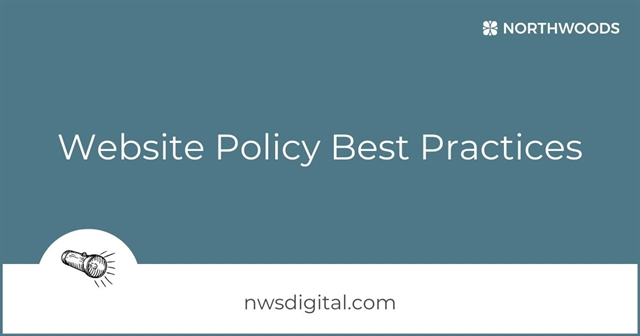By Jim Brophy
November 21, 2022
5 Minute Read
Northwoods client and business partners ask us this question a lot: How often should I redesign my website? Best practice is to redesign every 2-3 years, but we recommend asking this question instead: Why redesign my website?
The answers might seem obvious:
- We can leverage new design trends.
- I think my site has become stale.
- We can implement new technologies.
- The CEO wants a new look.
- We just rebranded.
- We’ve launched a new product or service line.
Any of these valid reasons could drive a redesign decision. But if you choose to update the look and feel, do so thoughtfully. Know exactly why you’re doing it. And know where look and feel belong on the redesign timeline and priorities list.
The “Building a House” Analogy
Say you’re working with a contractor to build your home. It’s a process. It takes a lot of planning. It’s tempting to start with the fun stuff: the style and color of carpeting, natural or faux wood floors, what colors for which rooms, what about wallpaper, ooh these are such cool light fixtures!
That’s the “look and feel” stuff – just like the look and feel of a website.
But what about the floor plan? Does it make sense? Will you navigate it intuitively? Do we need an accessible floor plan, say, doorways wide enough for wheelchairs? Are the bathrooms workable? One vanity, or two? One, two, or three-car garage? Oh – we forgot plumbing, wiring, HVAC, grading for runoff, block or poured foundation, basement or slab …
Whether you’re building a house or a website, first things – the foundational elements – must come first. Strategy should always come before look and feel.
Before You Redesign, Conduct a Website Strategy
The perfect time to examine the current state of your website’s performance is the time before you commit to a redesign. Does your current site meet your user and business needs? Does your site satisfy your business objectives and meet your goals?
This is the time to catch up with your site users, internal and external. Ask them about their needs. Can they easily find the content they need? Do members of your target audiences perceive gaps in your content? If so, what’s missing? Has your site traffic stagnated or slowly declined? Is the conversion rate acceptable? Is it rising or falling over time? What has your competition been up to, and how are you differentiating from direct competitors? Does your navigation provide optimal user experience?
Strategy Framework
The questions below can guide you to a website strategy framework. Some answers will lead to additional questions. When you’ve answered the first questions and the follow-ups, you’re well on your way to developing the website strategy that will inform your redesign.
In simplest terms, the strategy framework comprises the following high-level steps:
- Revisit/Establish Your Website Goals, Objectives and KPIs
- What are your website’s objectives? Lead generation? Brand awareness? Conversions?
- Have you established key performance indicators (KPIs), such as blog sign-ups per month, or downloads? Are you meeting those KPIs?
- Have you segmented your audience to generate better tracking metrics and improve conversion opportunities?
It’s vitally important to understand how your site can work harder and smarter for you before you concern yourself with how it will look post-redesign.
- Know Your Users
- Conduct surveys and/or focus groups to understand what they value about your website and what could use improvement. What do they want that your site lacks? What functionality do they want? What resources?
- Walk through the current website and ask them to comment on navigation, functionality, usefulness, look and feel, and their top use cases. Can users accomplish everything they want to accomplish on your site?
Two cautions: Don’t confuse trendy web design with excellent user experience. And trying to appeal to everyone often results in appealing to no one.
- Know Your Website
Understand how your current website performs. If you don’t know where the gaps are, how will you fill them in your redesign? Base your redesign on your updated objectives.
- Study your website traffic – how has your traffic changed year-over-year?
- If you’re using GA3 (the soon-to-be-retired Universal Analytics), what pages do users visit most? Where is your traffic coming from? What devices do visitors use when they interact with your site? Should your design be mobile-first?
- Are you using Google Tag Manager? (If not, you should be.)
- Have you moved to GA4? Are you tracking interactions?
- Have you performed a keyword and content analysis to understand how users search for your content? Have you optimized your destination content search?
- From a technical SEO perspective, can Google crawl your site, and is Google crawling the pages you want it to crawl? Do you have an XML sitemap?
- Make sure to do a competitive analysis and evaluate your primary competitors, in order to understand:
- Their content
- How their sites are organized, from a navigational perspective
- Can users find relevant content more easily on their sites than on yours?
- What are their calls to action?
- Conduct a content inventory to understand what you have and what’s missing. User feedback can help you spot these gaps.
- How easy is the content to understand and scan?
- Do your web pages have strong calls to action?
- Update Your Sitemap
Once you’ve conducted your research and analyzed your findings, apply this knowledge to the update of your sitemap. More than likely, you’ll find that you must update your navigation, create and/or optimize web content, rename navigational buttons or sections of your site, and perhaps combine some pages and eliminate others. Once you’ve developed your site map, you’re ready to embark on a redesign.
The checklist above doesn’t cover everything – website accessibility; data, privacy, and security policies; and e-commerce, for example. But it covers the data you need for building the foundation of your website redesign. With that part of your house in order, you can think about paint, carpet, wallpaper, and schedule an “open house” (okay, launch date) for a new, improved and more accommodating website built on data, research and feedback.
If you’re still unsure whether a website redesign is in order, don’t hesitate to reach out to us. We’re happy to help consult with you to determine the best course of action.
Related Blog Posts

What policies should a website owner or manager post? Learn about the three policy pillars – the bare minimums you'll need, including privacy, terms and conditions, and accessibility – and the intent behind them.

User input yields valuable data that can help guide your website strategy and marketing efforts. Here's what you should ask to effectively assess whether your current efforts are working.

Guided by a solid brand strategy, visual branding should prompt the positive emotions you want customers to feel. Here's why that's so important and why you shouldn't leave your visual brand identity to chance.